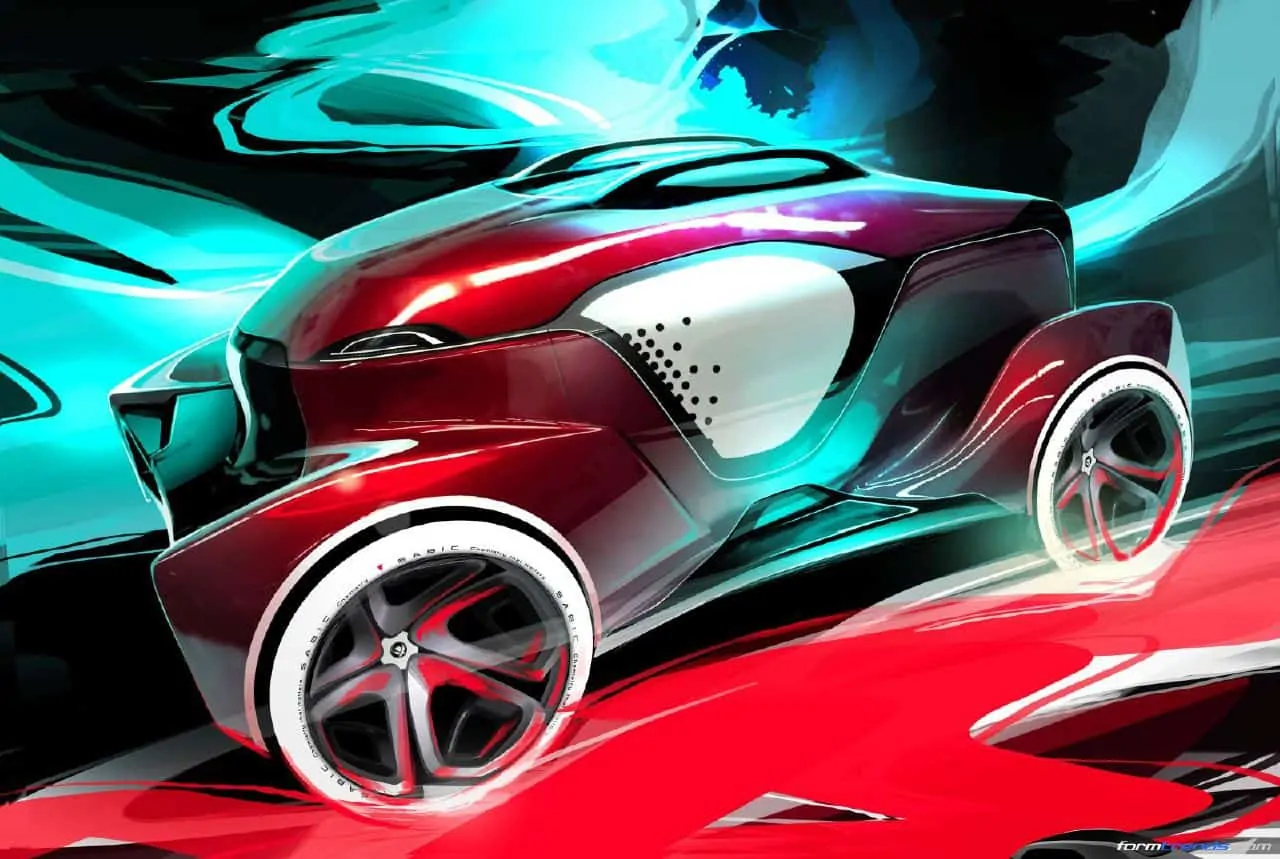Last week, we featured a report on the winners of the three-month long project and competition undertaken by Art Center (ACCD) students and sponsored by SABIC.
The project challenged ACCD students to design an innovative vehicle for Generation Alpha and focused on where automotive design is headed through 2030 and beyond. Here are a few more of the concepts that were created over the course of the project:
XV 1 Exposed Versatility Concept
Jaesung Kim’s XV 1 Exposed Versatility concept is an outgoing, expressive adventure vehicle for the ‘unplugged’ generation. Its use of a combination of high tensile strength and energy absorbing polymers allows the lower frame of the vehicle to become an active suspension rather than an accumulation of hundreds of metal parts.
The vehicle’s strong and highly ductile wheels are of an open structure, which not only provides impact absorption and comfort, but also high traction when driving off-road. Kim also used polycarbonate glazing to form the passenger capsule and the opaque glazing structure that forms the concept’s protective outer body shell.
Interchangeable Concept
Iljung Jeong’s Interchangeable concept allows space efficiency in an externally framed autonomous vehicle with a three-seat layout and a very small footprint.
Plastics allow the external Y shaped frame to become a signature design element as well as a virtual windshield. Next-generation, lightweight plastics were used to create the in-wheel motor mounting and many interchangeable parts for easy repair and customization.
Though not chosen as a grand award winner, Jeong received an award for design leadership and a $500 Art Center scholarship from SABIC. He earned this recognition because of his strong work ethic, proactive nature and eagerness to apply what he learned throughout the project.
Driven Concept
Wayne Ho’s Driven concept is essentially an autonomous taxi of the future, a next-generation on demand transportation access system. Passengers sit in pairs, face-to-face.
Plastics form the outer frame from which the inner capsule is suspended and allow the use of active sway to be controlled between the inner capsule and the outer shell chassis.
Large polycarbonate swing doors, combined with the tapering capsule shape, enable easy, ergonomically friendly entry and exit, while plastic body-colored roof panels not only function as integrated solar panels, but also aid aerodynamic performance and double as laser-guided receiver and transmission panels.
MI Car Concept
Young Jong’s MI Car is a concept based on personalization and creation of your own vehicle design using an electric platform constructed with new structural plastics, a 3D-printed structure and advanced synthetic fabrics.
The 3D printing process allows owners to create personalized features and easy, economical maintenance and modifications. Flexible, yet structurally strong lightweight plastics are used in the vehicle’s independent suspension system with four independent suspension arms, and new plastic-based synthetic fabrics create the roof structure that is draped over the upper structure.























